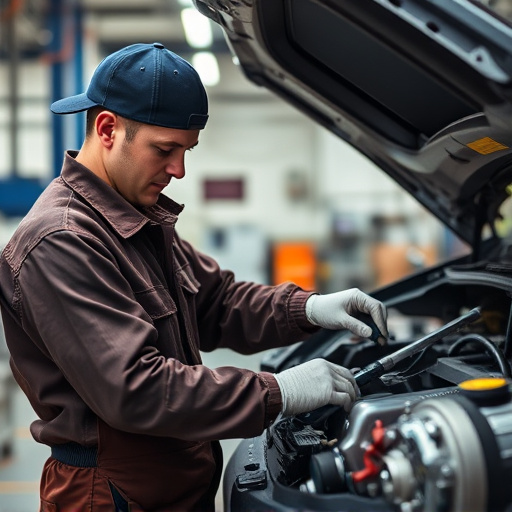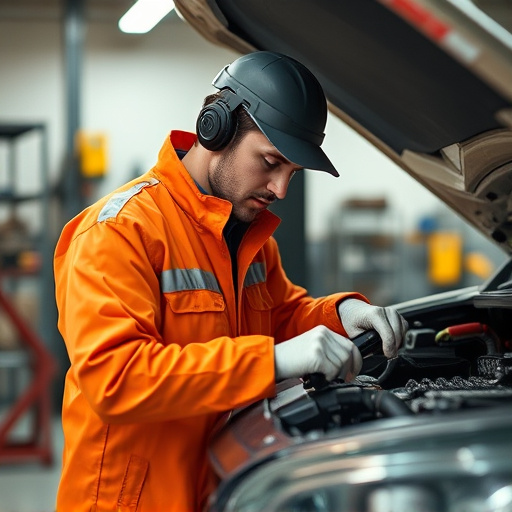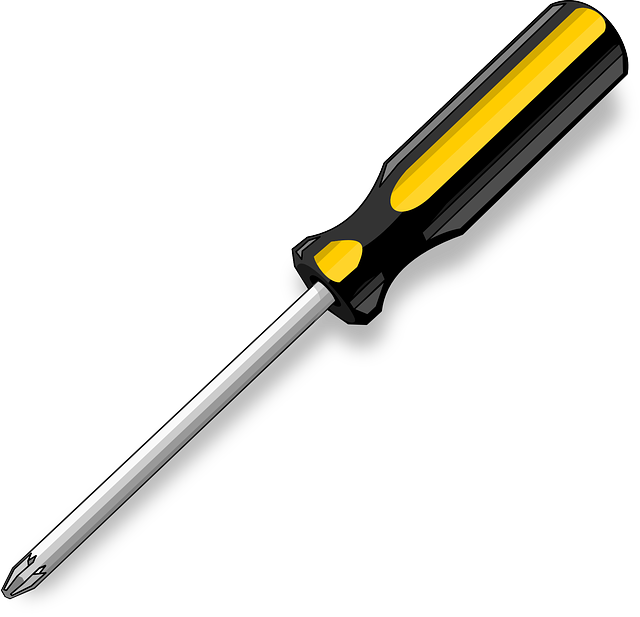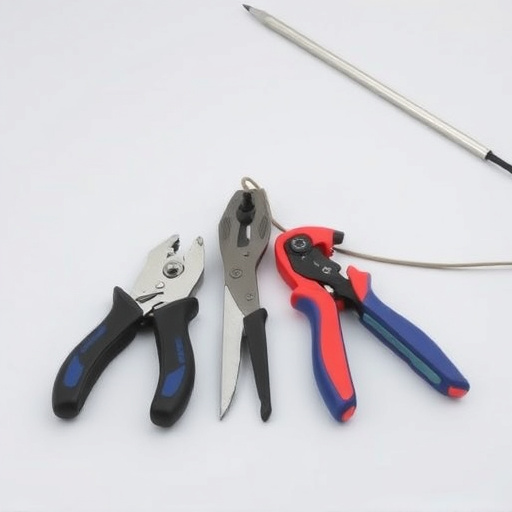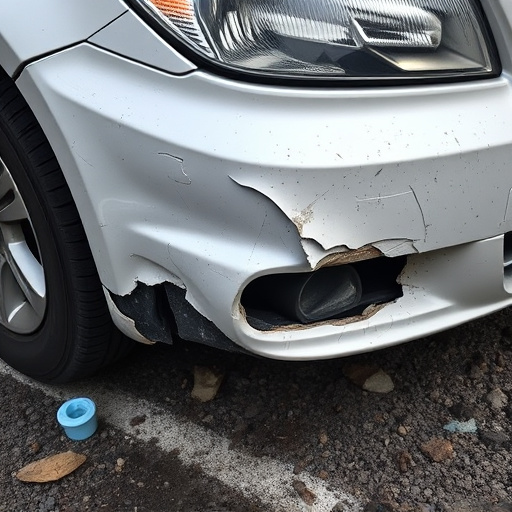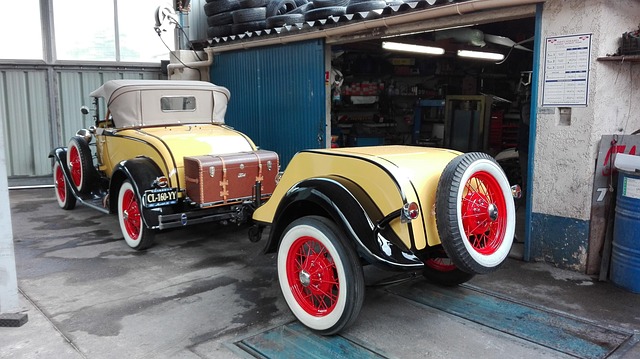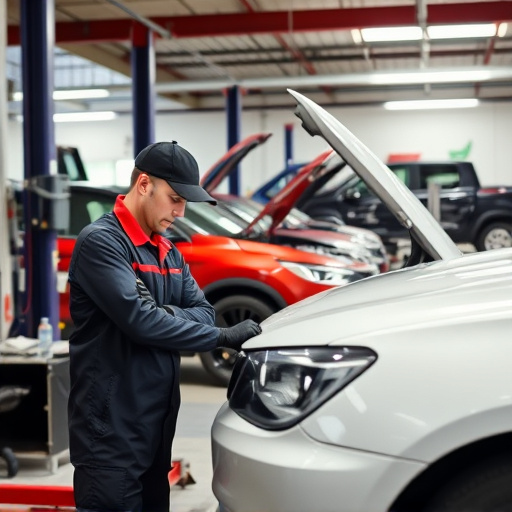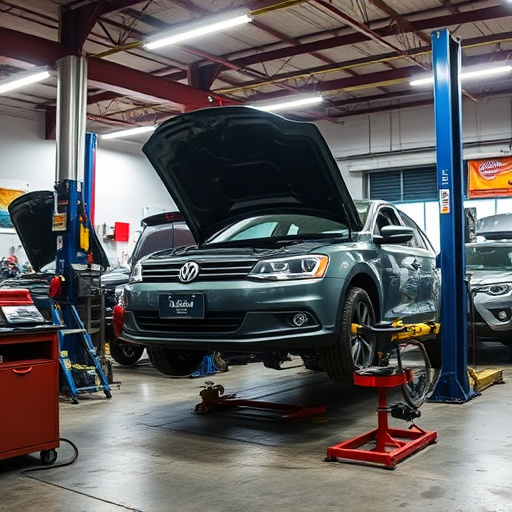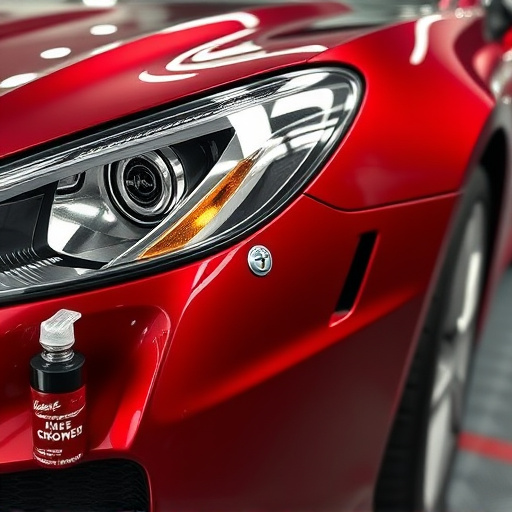Performing collision or fleet repairs on Mercedes vehicles with advanced electrical systems requires a strict Mercedes high-voltage disconnect protocol to isolate the battery and prevent hazards. This involves locating and identifying battery terminals, evacuating the area, removing fuses, sequentially disconnecting terminals, isolating external power sources, and ensuring safe grounding to safeguard technicians and prevent damage during welding operations.
Before welding near a Mercedes’ battery, a crucial safety step—Mercedes high-voltage disconnect—is essential. This article guides you through understanding Mercedes’ advanced high-voltage systems and navigating the critical disconnection process. By adhering to stringent safety precautions, you’ll mitigate risks associated with high-voltage systems. We provide a comprehensive, step-by-step guide ensuring your well-being and the integrity of the vehicle’s electrical components during welding operations.
- Understanding Mercedes High-Voltage Systems
- Safety Precautions Before Welding Near Battery
- Step-by-Step Guide to Disconnect Procedure
Understanding Mercedes High-Voltage Systems

Mercedes high-voltage systems are a complex network of components designed to power modern vehicles’ advanced electrical systems. These systems, often referred to as 48V or 800V architectures, have become increasingly prevalent in luxury and performance cars, offering enhanced efficiency and improved safety features. At the heart of this innovation lies the battery pack, which stores high-voltage energy to support various electric and electronic control units (ECUs).
When conducting collision repair services or fleet repair services on Mercedes vehicles, especially those with high-voltage systems, it’s crucial to understand the potential risks associated with working near the battery. This knowledge prompts the necessity for a Mercedes high-voltage disconnect—a safety measure that isolates the battery from the rest of the electrical system during maintenance or repair, ensuring the well-being of both technicians and the vehicle itself, and preventing any adverse events in automotive restoration processes.
Safety Precautions Before Welding Near Battery

Before undertaking any welding near a Mercedes battery, it’s paramount to observe stringent safety precautions. High-voltage systems in modern vehicles, especially in premium brands like Mercedes, pose significant risks if not handled properly. The first step is to ensure the Mercedes high-voltage disconnect is engaged, completely isolating the battery from the vehicle’s electrical system. This crucial step prevents any accidental arcs or sparks that could lead to severe injuries or damage.
Professional auto repair shops equipped with experienced technicians understand these hazards and follow strict protocols. They utilize specialized tools and equipment designed for safe battery handling during repairs or autobody repairs. Even when undertaking seemingly simple tasks like replacing a fender or performing car paint services, the battery must be securely disconnected to mitigate risks associated with high-voltage discharge, ensuring the safety of both the technicians and the vehicle.
Step-by-Step Guide to Disconnect Procedure

Before any welding operations near a Mercedes battery, it’s crucial to follow a meticulous high-voltage disconnect procedure for safety and effective auto repair services. This process involves several steps that should be executed precisely to prevent electrical shocks or short circuits. Start by locating the high-voltage (HV) battery in your Mercedes vehicle, typically found in the engine bay. Next, identify the positive (+) and negative (-) terminals using color-coded markings for easy reference. Ensure all occupants leave the area to avoid any accidental contact with live wires. Then, locate and remove the relevant fuses associated with the battery to interrupt the electrical flow.
Proceed by utilizing specialized tools to disconnect the negative terminal first, followed by the positive one. This sequential approach minimizes the risk of voltage discharge. Use a suitable wrench or socket for each terminal, engaging them in a counter-clockwise direction until they pop out securely. Once disconnected, isolate the battery from any external power sources and ensure all tools and equipment are safely grounded to channel any residual electrical energy away from the work area. Following these meticulous steps ensures a safe working environment at an automotive body shop or collision repair center, facilitating precise welding operations without compromising safety.
When welding near a Mercedes battery, prioritizing safety is paramount. To ensure a secure and effective process, disconnecting the high-voltage system is an indispensable step. By following the outlined procedure, you can minimize risks associated with powerful electric currents, making your welding experience safer and more efficient. Always remember to treat high-voltage systems with respect and consult professional guidelines for optimal results.
